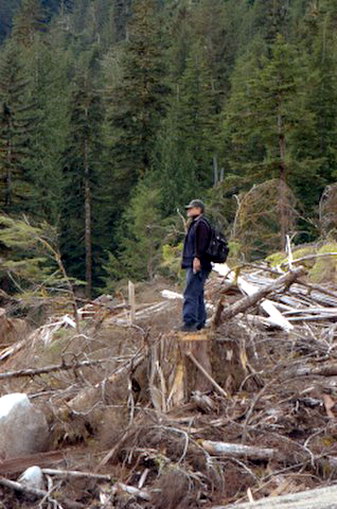
Phoney Great Bear Rainforest Deal

Interfor's Destruction of Nuxalknalus (King Island), |
 |
Left: Interfor clearcut
logging operation on King Island, 23 October 2008. For scale, note
the person in blue. Click to enlarge. These are Nuxalk ancient cedars: stolen
from our land: the wrecking of our culture. |
A lot
of the contrived information is used as public relations or propaganda
to serve the status quo – also to show how much they are doing
to keep the Indian happy and well. Although greed and corruption
may drive some First Nations to ignore their responsibilities to
the lands, not all Indian citizens and leaders are susceptible. |
 |
 |
Today, while Canada
and BC are stumbling through their own legal systems, it is likely
that their lies and untruths will eventually catch up with them.
It can only last so long. But meanwhile officials are able to railroad
through many lucrative development and resource extraction projects
before they can be stopped or contested by First Nations. |